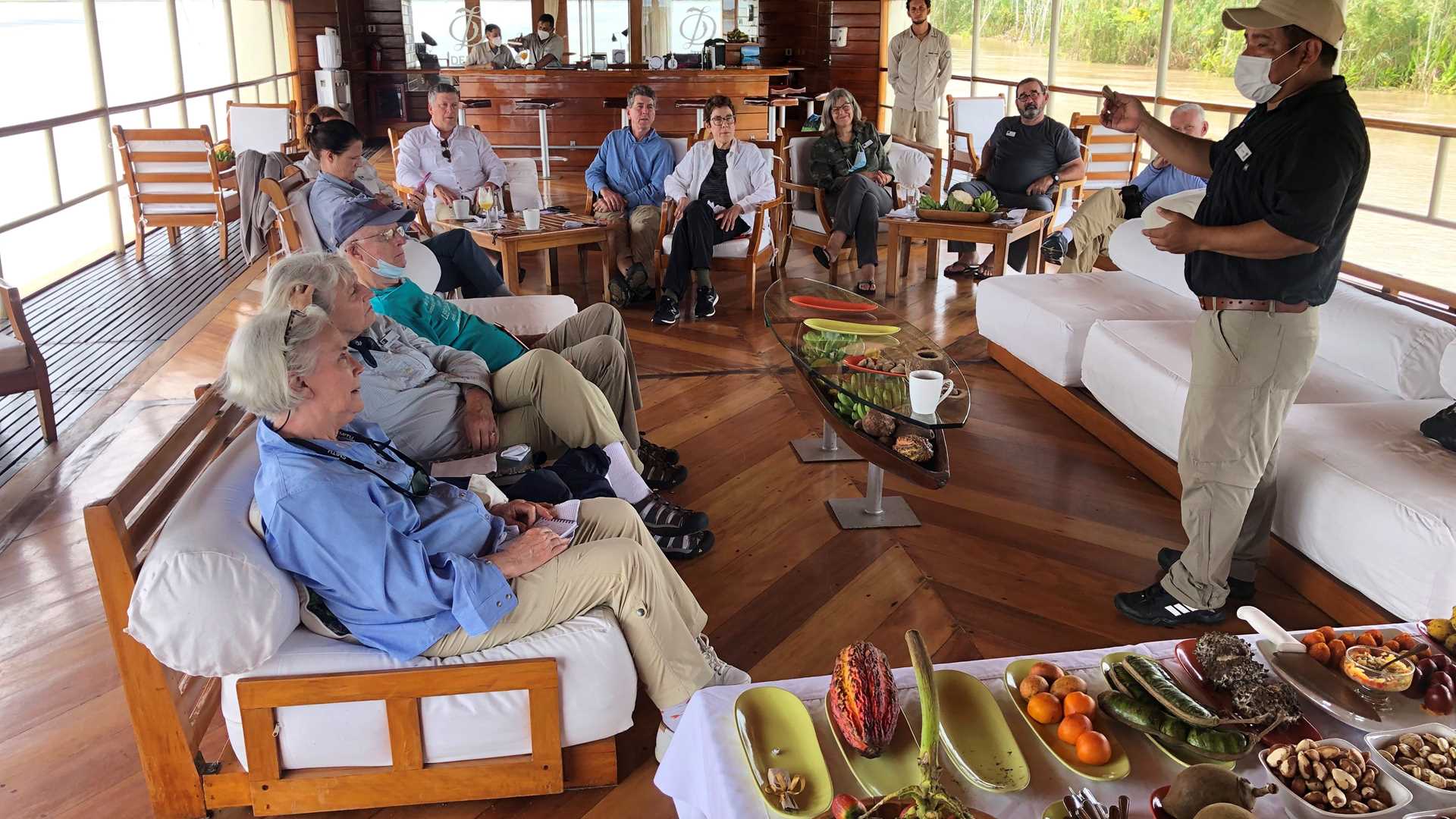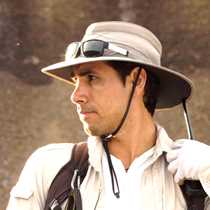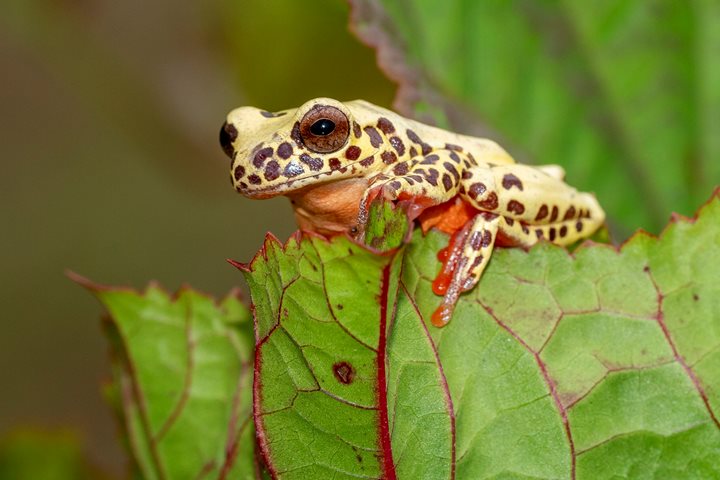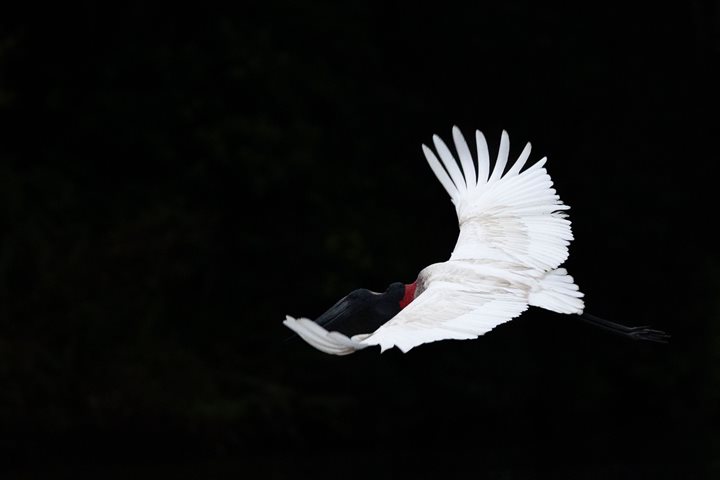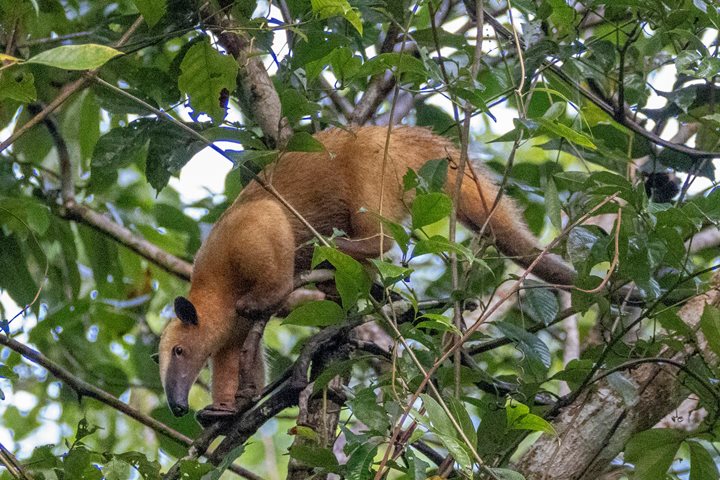Delfin II navigated upstream along the mighty Ucayali River. In the morning, we explored Yanallpa Creek. Our guests observed many birds and different species of monkeys. The night owl monkey, in particular, is quite iconic.
In the afternoon, we departed for kayaking at El Dorado River. After heavy rains slowed later in the day, we set out to explore the forest via skiffs. We were on the lookout for nocturnal wildlife.

